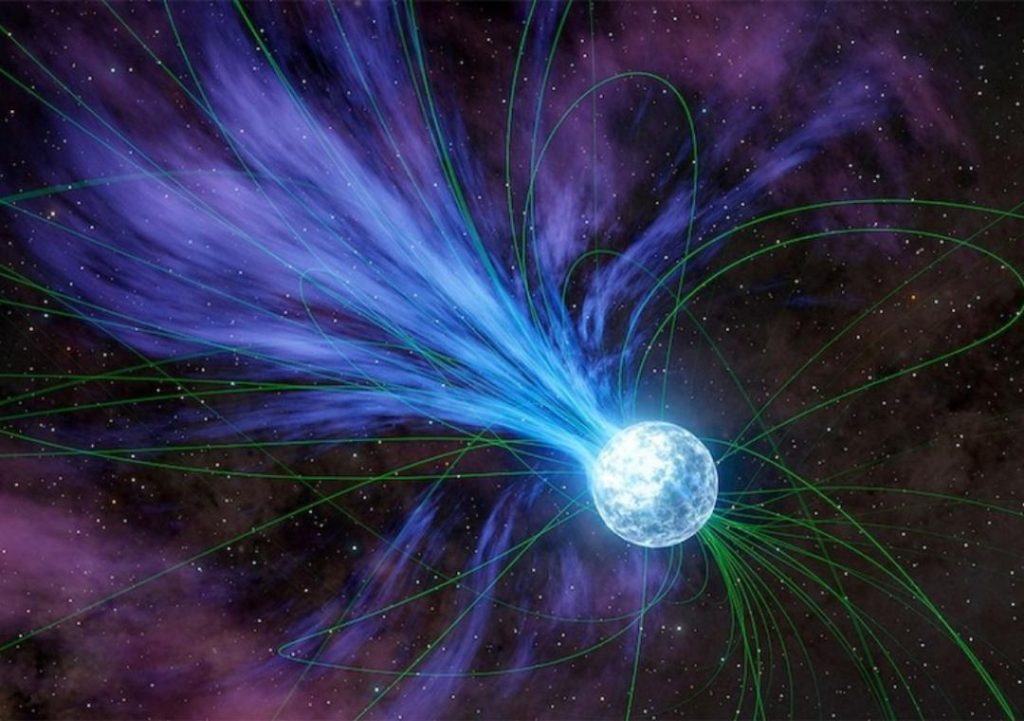
Gold & Platinum Created through Neutron Stars’ Explosions: Study
For centuries, humans have been fascinated by the origins of precious metals like gold and platinum. Where did these valuable resources come from? Scientists have long been searching for answers, and a recent study led by Columbia University student Anirudh Patel has shed new light on the mystery.
According to the study, highly magnetized neutron stars, also known as magnetars, played a crucial role in the creation of these elements. These cosmic explosions occurred over 20 years ago, and their aftermath has revealed the secrets of gold and platinum’s origins.
Magnetars: The Cosmic Factories
Magnetars are a type of neutron star, which is the remnant of a massive star that has undergone a supernova explosion. These stars are incredibly dense, with the density of a sugar cube that weighs as much as a mountain. They are also incredibly magnetic, with magnetic fields that are trillions of times stronger than the Earth’s.
When a magnetar explodes, it releases a massive amount of energy in the form of flares. These flares contain a variety of elements, including gold and platinum. The explosion occurs when the magnetar’s magnetic field becomes unstable and collapses, causing the star to release a massive amount of energy.
The Study’s Findings
The study, led by Anirudh Patel, analyzed data from the Swift Gamma-Ray Burst Mission, a NASA spacecraft designed to detect and study gamma-ray bursts. The mission has been observing the universe for over 20 years, and its data has provided valuable insights into the origins of gold and platinum.
According to the study, the explosions of magnetars are responsible for creating these elements. The explosions release a massive amount of energy, which heats up the surrounding material to incredibly high temperatures. At these temperatures, the nuclei of atoms can fuse together to form heavier elements, including gold and platinum.
The Frequency of Magnetar Explosions
The study found that magnetars explode approximately once per decade in the Milky Way galaxy. However, this frequency increases to once per year across the observable universe.
This means that magnetars are a relatively rare occurrence in the Milky Way, but they are more common across the universe. This could have significant implications for our understanding of the origins of gold and platinum, as well as other elements.
Implications for Our Understanding of the Universe
The study’s findings have significant implications for our understanding of the universe. It suggests that magnetars play a crucial role in the creation of elements, particularly heavy elements like gold and platinum.
This could have significant implications for our understanding of the origins of life on Earth. If magnetars are responsible for creating the elements that are necessary for life, then it is possible that the universe has been “seeded” with the building blocks of life.
Conclusion
The study led by Anirudh Patel has provided new insights into the origins of gold and platinum. The explosions of magnetars have created these elements, which are then dispersed throughout the universe. This could have significant implications for our understanding of the universe and the origins of life on Earth.
As scientists continue to study the universe, they are uncovering new and exciting secrets about the origins of the elements that make up our world. The study of magnetars and their role in the creation of gold and platinum is just one example of the many fascinating mysteries that remain to be solved.
Source:






